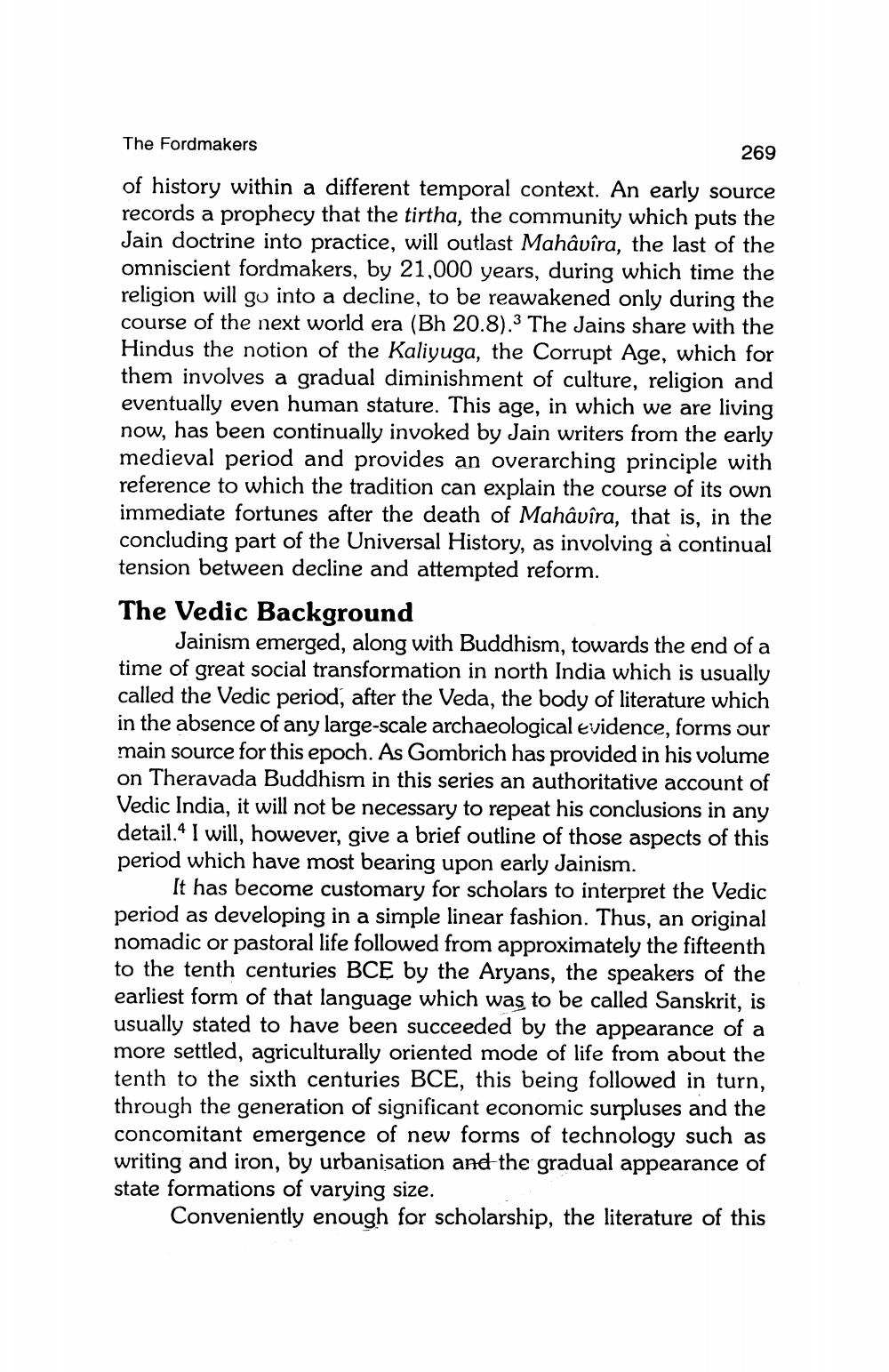________________
The Fordmakers
269
of history within a different temporal context. An early source records a prophecy that the tirtha, the community which puts the Jain doctrine into practice, will outlast Mahâvîra, the last of the omniscient fordmakers, by 21,000 years, during which time the religion will go into a decline, to be reawakened only during the course of the next world era (Bh 20.8).3 The Jains share with the Hindus the notion of the Kaliyuga, the Corrupt Age, which for them involves a gradual diminishment of culture, religion and eventually even human stature. This age, in which we are living now, has been continually invoked by Jain writers from the early medieval period and provides an overarching principle with reference to which the tradition can explain the course of its own immediate fortunes after the death of Mahâvîra, that is, in the concluding part of the Universal History, as involving à continual tension between decline and attempted reform.
The Vedic Background
Jainism emerged, along with Buddhism, towards the end of a time of great social transformation in north India which is usually called the Vedic period, after the Veda, the body of literature which in the absence of any large-scale archaeological evidence, forms our main source for this epoch. As Gombrich has provided in his volume on Theravada Buddhism in this series an authoritative account of Vedic India, it will not be necessary to repeat his conclusions in any detail.4 I will, however, give a brief outline of those aspects of this period which have most bearing upon early Jainism.
It has become customary for scholars to interpret the Vedic period as developing in a simple linear fashion. Thus, an original nomadic or pastoral life followed from approximately the fifteenth to the tenth centuries BCE by the Aryans, the speakers of the earliest form of that language which was to be called Sanskrit, is usually stated to have been succeeded by the appearance of a more settled, agriculturally oriented mode of life from about the tenth to the sixth centuries BCE, this being followed in turn, through the generation of significant economic surpluses and the concomitant emergence of new forms of technology such as writing and iron, by urbanisation and the gradual appearance of state formations of varying size.
Conveniently enough for scholarship, the literature of this




